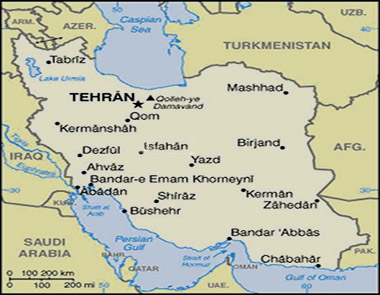The origin and history of Yazd Persian rugs
The history of Yazd Persian rugs is deeply rooted in the Yazd region of central Iran, where the art of rug making has been a living tradition for centuries. The city's location on the country's trade routes has allowed Yazd carpets to be influenced by a variety of cultural and aesthetic influences. The first written records of Yazd iranian rugs date back to the 16th century, when Persian carpet making was given a boost with the support of the Iranian court. Yazd rugs are often characterised by their simplicity and richly detailed designs. Local craftsmen worked with special techniques and patterns that allowed the carpets to be long-lasting and durable. The carpet-making tradition in the city of Yazd has become an important part of Persian culture and craftsmanship, and local families have passed on the secrets of the craft for generations.

The carpet heritage of Yazd
The master weavers of the city of Yazd not only made carpets for the Persian Empire, but also became popular in international markets. The tradition of carpet weaving in Yazd has been passed on for centuries by families of craftsmen, and this knowledge has been handed down from father to son. They have used handicraft techniques that have allowed for the creation of finer, more detailed designs. Yazd Persian rugs have become famous for their delicate, almost silky texture and harmonious colour schemes. This craftsmanship is valuable not only from an aesthetic point of view, but also from a functional one, as the durability and quality of Yazd carpets is timeless.
Materials and patterns of Yazd Iranian carpets
One of the greatest attractions of Yazd Iranian rugs lies in the rich palette of colours and quality materials carefully selected by local artisans. Wool is the most common raw material used for the carpets, and its fineness and durability are key to the texture and longevity of Yazd rugs. The wool is hand spun and dyed with traditional vegetable dyes that produce natural and deep colours. The colour palette of Yazd carpets reflects specific local characteristics, including the golden sands of the desert, the deep reddish hues of the rocky mountains and the azure sky. In terms of pattern, Yazd rugs use a variety of geometric and floral motifs. These patterns are often symmetrical and detailed, requiring precise hand knotting. Medallion motifs, which are traditional symbols of Persian art, are particularly popular in the central part of the carpet. Each piece of Yazd carpets is unique, as the combination of colours, materials and patterns reflects the individual creativity of the craftsmen.
The knotting technique: the uniqueness of Yazd Persian rugs
The uniqueness of Yazd rugs lies largely in the knotting technique used, which requires a special precision and skill. For centuries, Persian rug makers have been using the famous "Iranian knotting technique" (also known as Senneh knotting), which produces finer, tighter and more durable knots than the Turkish knotting technique. This technique allows rugs to show more detailed and crisp patterns while maintaining their resilience and resistance. Hand-knotting is a time-consuming process that requires a high degree of precision from the craftsman, but the result is a work of art that will be admired and used for generations.
With their timeless beauty and superior quality, Yazd rugs are ambassadors of Persian culture, decorating homes around the world.

